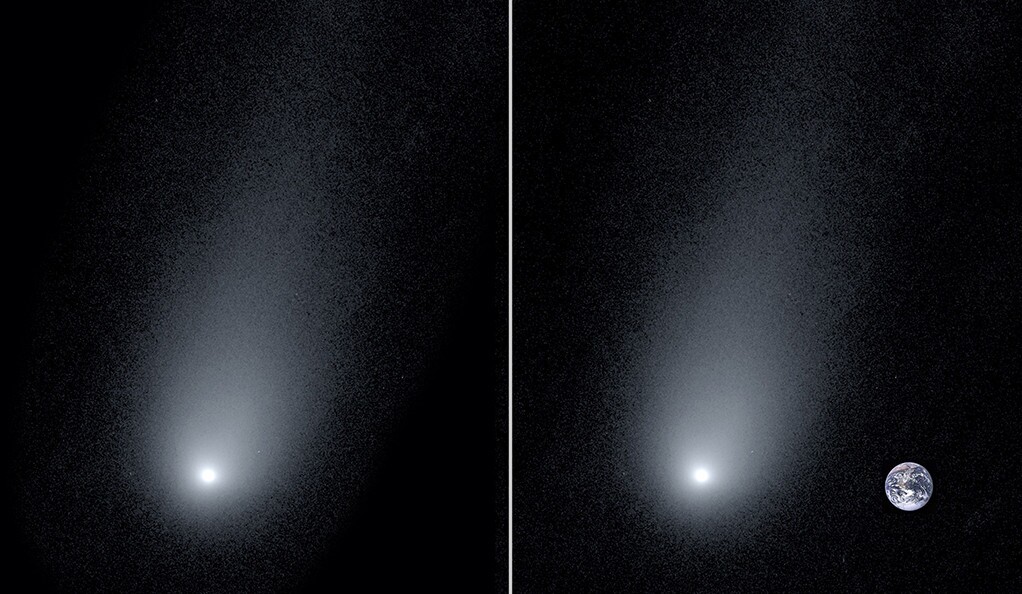We don’t get all that many visitors in our quiet corner of the galaxy. In fact the comet 2I/Borisov is only the second interstellar visitor we’ve welcomed to our solar system, following ‘Oumuamua in 2017. Despite whizzing around the Sun at 100,000 mph (161,000 km/h) late last year, scientists have managed to quantify the amount of water it shed on this leg of the journey, the first time they have achieved such an insight into an interstellar comet.
The inbound 2I/Borisov was first detected in August last year and made its closest approach to the Sun four months later. This provided scientists with plenty of opportunity to train their instruments on the interstellar comet, detecting the first signs of water and gas molecules and studying its chemical makeup in impressive detail.
As frozen balls of gas and dust, comets shed substantial amounts of material as they warm on approach to the Sun, and those originating outside the solar system are no different. Surface materials such as carbon dioxide heat up and turn into gas, while water vaporizes when it comes within 230 million miles (370 million kilometers) of our star.
When this happens, the water molecules are busted apart by sunlight and a molecule called hydroxl is produced. NASA’s Neil Gehrels Swift Observatory is perfectly equipped to measure hydroxl, as it can pickup the unique signature of UV light the molecule emits using its Ultraviolet/Optical Telescope (UVOT).

The Neil Gehrels Swift Observatory team used this instrument to make six observations of 2I/Borisov between September and February. In the month of November, as it closed in on the Sun, the team detected a 50-percent increase in hydroxl and, by extension, water.
At the height of its water-shedding activity, the team says 2I/Borisov was losing eight gallons (30 L) of water a second, which would fill a bathtub in 10 seconds. In all, the team believes the comet shed nearly 61 million gallons (230 million L) of water on its journey through our solar system, more than enough to fill 92 Olympic-sized swimming pools.
“We’re really happy that Swift’s rapid response time and UV capabilities captured these water production rates,” says co-author Dennis Bodewits. “For comets, we express the amount of other detected molecules as a ratio to the amount of water. It provides a very important context for other observations.”
These other observations include a new understanding of the comet’s minimum size, with the scientists calculating 2I/Borisov to measure just 0.74 km (0.45 mi) across. The team also believes that at least 55 percent of the comet’s surface was actively shedding material when it flew by the Sun, which is at least 10 times the active area on typical solar system comets.
The video below provides an overview of the discovery, while the research was published in The Astrophysical Journal Letters.
Source: NASA





